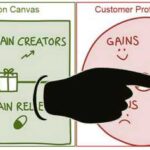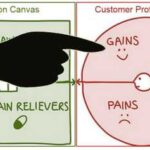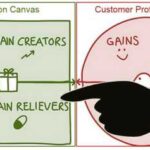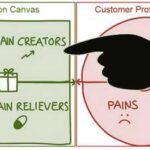Since the assumption is that you already have a business, we assume that you have a product or service and some customers. Therefore, it is also assumed that you already have a working business model. If not, you will want to make sure you have a working business model that you can articulate.
I have developed a variety of ways you can learn more about crafting a working business model using the Business Model Canvas process. Here are some options you can choose from.
- Download the eBook or paperback from Amazon. Most extensive source of content (Fee $3.99 Kindle Edition, $11.99 Paperback Version)
- Watch a Udemy video presentation of a recorded workshop with supplemental content (Fee $9.99 with 1/2 off coupon)
- Listen to the audiobook version (Free)
- Listen to Audiobook version on Audible.com (requires a subscription)
- Listen to a podcast of a Business Model Canvas workshop (Free)
- Explore all the posts one by one in the database (Free)
I have also created an online tool that uses PowerPoint to help you develop your own Business Model Canvas online. You can download this below.
The following video looks at the 11 most common business models.
The real challenge that most businesses face is that they do not have a very clear understanding of the customer. Many businesses that are not getting traction have a value proposition that is not aligned with the needs of the customers. Therefore, the first step in any marketing analysis is to review the business model to verify it has a product market fit.
To that end, every business should be able to write “A day in the life of the ideal customer”. As a business owner, you have to understand the world of your prospective client in great detail so that your value proposition addresses the customer’s needs.
To do this, business owners must first make sure they understand the tasks the customer routinely performs.
With an understanding of the tasks that the customer routinely performs, the business should determine where the customer’s pain points are.
And if there are any gains that the business can provide that the customer is not yet aware of.
Armed with this information, it is time to test if the business’ value proposition provides the client with pain relievers and gain creators.
Another tool that is very valuable in making sure you have a product market fit is to apply the four A’s.
One of the biggest mistakes many entrepreneurs make is trying to cast too big a net in the hopes of capturing more revenue. These days, you have to be a specialist to gain market traction.
Businesses are better served when they focus more on a thin market than a thick one.
The design of your actual product or service can help make it go viral on its own.
Businesses fall into two distinct categories, businesses whose customers are other businesses and are referred to as Business to Business (B2B) and businesses whose customers are individual consumers and referred to as Business to Consumer (B2C).
In a B2B environment, businesses need to know how the customer’s business measures success and what niche they occupy in their industry, and combine this knowledge with external factors like the company’s value proposition as compared to their competition and economic factors.
In a B2C environment, businesses need to understand the demographic and psychographic characteristics of the consumer and their emotional drives.
So, before we go much further, I recommend that businesses re-evaluate their basic market research.
Click on the “Market Aspects” link below to be brought to the section in the Pre-Start path where we discuss B2B and B2C, and the content and tools to verify that the business understands more about the customer’s attitudes and behaviors. When done, just close that window to resume this discussion.

Market Aspects
Now that the business has a good idea about the customer segment it serves, the business should be sure it understands the market structure where it plans to compete.
And if their solution is targeting the right problem.

Marketing Strategy
Next, we need to look at Marketing Strategy. Click here to go directly to the next section.












